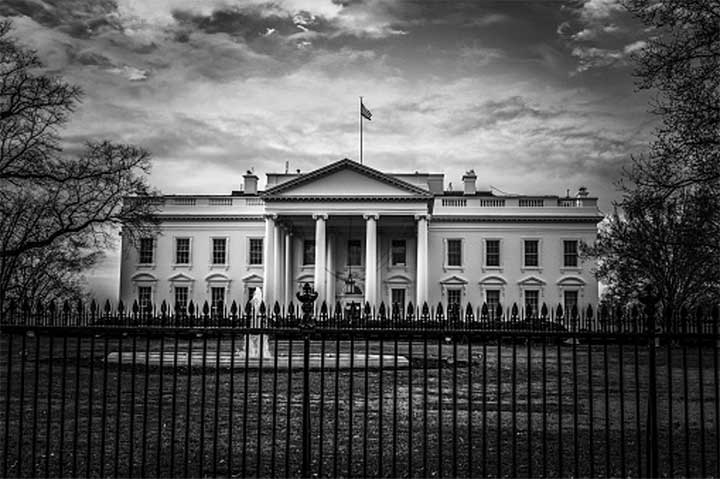The 2020 Election Results Were "Uncertain?" The Election of 1876 Begs to Differ
By Mykal Kaminski

The internet loves "top ten" lists of virtually everything – visit this website as an example. So, using that metric, where does the 2020 vote fall in the "uncertain" category? – Not even in the top five.
The election of 1876 makes the "disputed" elections of 2020 or even 2000 look like exercises in certaintude. It took 16 days following the 2020 vote for the U.S. General Services Administration (GSA) to formally inform President-elect
Joe Biden that the transition process could begin. It took 36 days before Al Gore re-conceded to George W. Bush. In 1876, it took well over three months before the first glimmer of a light at the end of the election tunnel to shine.
Some background: The American Civil War ended in 1865 and President Lincoln was assassinated. Vice President Andrew Johnson took over and served out Lincoln's second term during which he got himself impeached. He survived by a margin of one vote in his senate trial. Put simply, Johnson was not an able leader and wasn't even nominated by his party to run for a "real" term in 1868. Instead, that honor fell to Civil War general Ulysses S. Grant. Grant was mostly hated by the historians of his day, but modern scholars give Grant decent to good marks, with some ranking him among the top 20 best U.S. presidents.
President Grant oversaw the process Lincoln began; stitching the United States back together. Known as "Reconstruction," the process wasn't pretty. U.S. troops were stationed in some defeated Confederate states to force compliance with laws giving rights to recently-freed slaves. The former U.S. Army general Grant used the military as he prosecuted the Ku Klux Klan, appointed African and Jewish Americans to federal office, and took the steps he deemed necessary to stamp out treason.
Grant, however, stamped on so many toes that in 1872, the Washington machine was almost united in opposition to him winning a second term. But voters overruled D.C. and Grant won 31 of the then-37 states and a huge popular vote victory as well. Four years later, many expected Grant to run for an unprecedented third term. Grant, however, disliked being a politician and while a third term would have been perfectly legal under the law at the time, he rejected running. Thus, was born the beginning of the chaos of 1876.

This election marked the second time ex-Confederate states and African-American men participated in a post-war presidential election. With General Grant retired from the battlefield of politics, the pro-Union Republicans needed a winning ticket to carry Reconstruction forward. On the other side of the aisle, the Democratic Party – which back then mostly favored "state rights" and a lenient attitude toward former rebels – looked for a contender whom could arrest many of Grant's Reconstruction policies.
No one expected results from the November 7th, 1876 election to arrive that night, or even that week. But months after November 7th, no results were in. In 1876, both parties declared victory in Florida, Louisiana, and South Carolina. Escalating tensions, an electoral college member from Oregon was replaced. Another monkey-wrench was Colorado. Not having time to organize for the election after becoming the 38th state that year, Colorado's state legislature chose its electors, marking the last time no popular vote was factored into a state's choice for president.
State election boards argued over certifications, elector votes were disputed, some Republicans tried to get the Senate to choose, while Democrats argued the Constitution sent disputed presidential elections to the House of Representatives – where the Democrats had a majority. The newly-rejoined United States of America was in the throes of a full-blown constitutional crisis.
Inauguration Day then was March 4th, but as of late January 1877, no consensus had been reached. Would the Republican Governor of Ohio, Rutherford B. Hayes, become the 19th president of the republic, or would the Democratic candidate, New York Governor Samuel J. Tilden be sworn in? Might there be dueling inaugurations with both claiming to be president?
A deal was struck on January 29, 1877. Congress passed a law creating a 15-member Electoral Commission tasked with choosing between Hayes and Tilden, the latter of whom had won the popular vote. The commission adjourned on March 2nd, giving Hayes a one vote victory of 185 electoral votes to Tilden's 184.
The party of Abraham Lincoln had prevailed, but at a steep cost – arguably the most Pyrrhic presidential victory in history. Under the deal that sent Hayes to the White House, troops were withdrawn from the south. A "hands-off" policy thereafter adopted by Washington resulted in many southern states enacting laws to disenfranchise Black voters and noxious segregation statutes that continued on the books into the 1960s.
Many held their breath over the month of November, 2020. Historians, however, look at bigger pictures, and are sure to rank 2020 as a cakewalk for American democracy.
 >
>